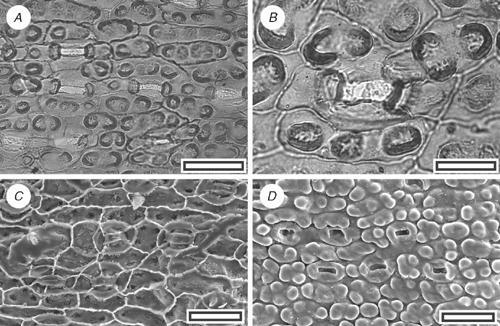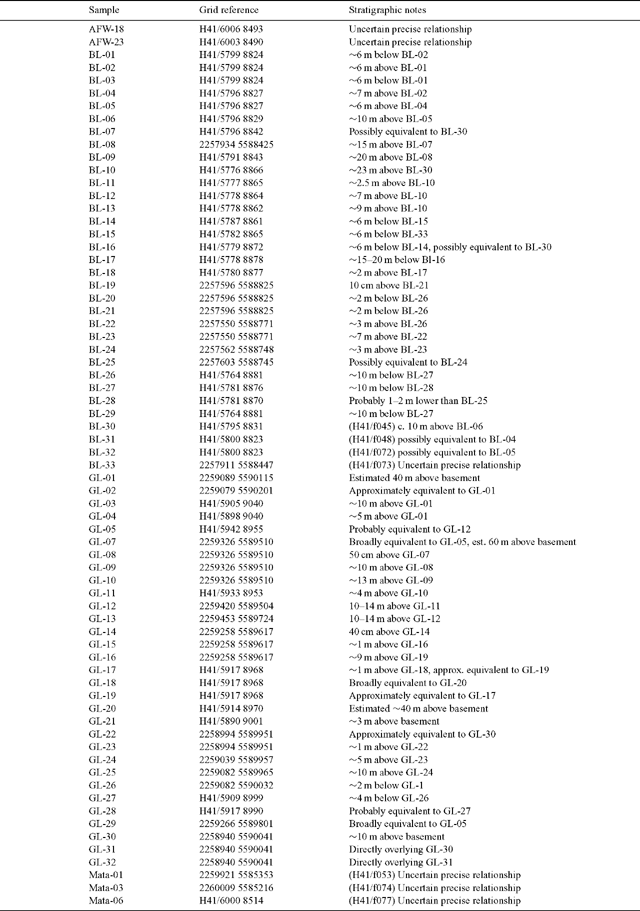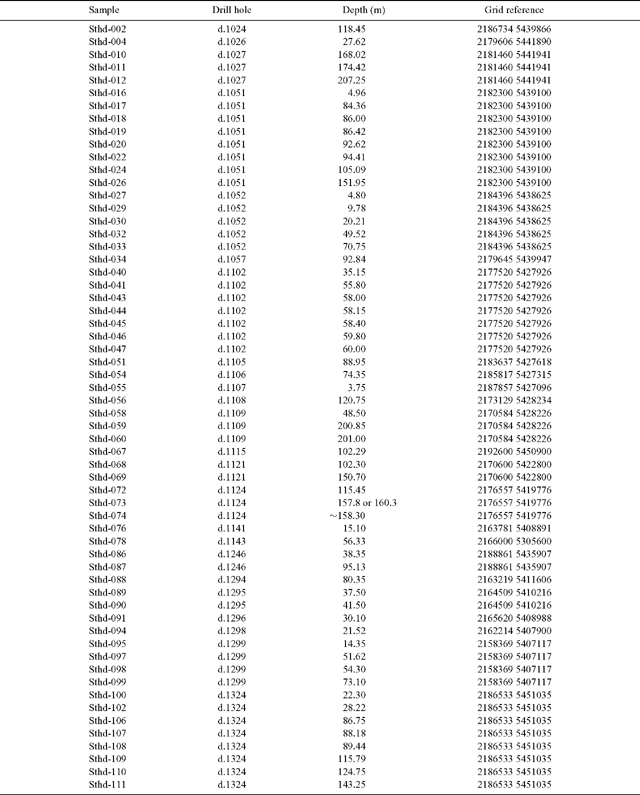Conifer and cycad distribution in the Miocene of southern New Zealand
Mike PoleCentre for Marine Studies, University of Queensland, St Lucia, Qld 4072, Australia. Email: mpole@marine.uq.edu.au
Australian Journal of Botany 55(2) 143-164 https://doi.org/10.1071/BT06056
Submitted: 23 March 2006 Accepted: 14 November 2006 Published: 16 March 2007
Abstract
One hundred and nineteen samples were investigated from Early Miocene localities of the St Bathans Paleovalley in the Manuherikia Group in Central Otago and the Gore Lignite Measures of the East Southland Group in Southland for their content of conifer and cycad macrofossils. In total, these contained 16 species of conifer in 12 genera. They include the first New Zealand record of Papuacedrus and a new genus of cycad. A specimen previously described as Podocarpaceae-Taxaceae is now regarded as being in the Taxaceae, and is the first clear record of this family in New Zealand. The ranges of Araucaria taieriensis (known from the Late Cretaceous) and Kakahuia (known from the Paleocene) are extended to the Early Miocene. Retrophyllum vulcanense was the most widespread species in the gravel-dominated braided river environment of the St Bathans Paleovalley, and was dominant in some low-diversity communities. Dacrycarpus dacrydioides was the second most widespread species in the Valley. One sample stands out as being distinctly different, as it contains the only record of Papuacedrus and Dacrydium while Retrophyllum is absent. The taxonomic make-up of the Gore Lignite Measures is different, possibly due to the very different peat and clay-dominated soils with poorer drainage. In contrast to the St Bathans paleovalley, Araucariaceae and Dacrydium appear more important in the Gore Lignite Measures.
Acknowledgements
I thank Barry Douglas and Graeme Mason for their help over the years, and Mr ‘J. J.’ Enright for allowing access in the St Bathans area. I am grateful to Crown Minerals for providing access to the Southland drill cores.
Brodribb TJ, Hill RS
(1999) Turner Review No. 2. Southern conifers in time and space. Australian Journal of Botany 47, 639–696.
| Crossref | GoogleScholarGoogle Scholar |
as being in either the Podocarpaceae or the Taxaceae. The most important character is the pronounced rim around the stomatal pore. This is clearly formed of fused papillae and not merely a Florin Ring (raised subsidiary cells). This is supported by new material which shows that surrounding epidermal cells may also be sharply papillate or with subdued papillae. Similar rings of fused papillae are characteristic of the Cupressaceae (s.s.) and the Taxaceae. The Cupressaceae (s.s.) are clearly different on the basis of their ubiquitous monocyclic, typically networked stomatal complexes, and the usual presence of calcium oxalate crystals in the epidermal cell walls. The fossil is dicyclic, not networked, and has no calcium oxalate. The possibility that this fossil belonged to the Podocarpaceae was based on extant Microstrobos. Florin (1931, p. 244) described papillae-like bulges (as ‘papillenartig vorgewölbte’) in the genus, and an illustration in Wells and Hill (1989, fig. 45) shows these structures on the cells surrounding the subsidiary cells. However, Microstrobos is strikingly different in several ways (for instance it is the only extant Podocarpaceae which has mostly monocyclic stomatal complexes; Florin 1931). The fossil is clearly not Microstrobos, and it is unlikely to belong in the Podocarpaceae. This leaves the Taxaceae, and in fact the specimen seems realistically identical to Taxus. Austrotaxus spicata Compton, the only Southern Hemisphere representative of the family, has the papillate ring around the stomatal pore, but not the papillate epidermal cells. Placement in Taxaceae now seems obvious. Austrotaxus is taxonomically and geographically restricted and may well have included species with papillate epidermal cells in the past. On biogeographical grounds, the fossil is perhaps more likely to be an extinct Austrotaxus than a member of the currently Northern Hemisphere Taxus. However, Taxus today does extend to areas such as the Philippines, where there is an overlap with ‘southern’ conifers such as Dacrycarpus. For this reason I feel the generic placement remains open. This is the first record of fossil Taxaceae in the Southern Hemisphere. The family was ignored in the review of southern conifers by Brodribb and Hill (1999).
Taxaceae or possibly Podocarpaceae
Kakahuia campbellii Pole 1997b (Fig. 13)

|
Holotype and type locality: OU30478 (J38/f77, Kakahu, South Canterbury).
Local reference specimen: SL1453 (GL-01).
Referred specimens and occurrence: SL1333, Mata-03.
Description
Leaves. Leaf arrangement and shape (in the Manuherikia Group) unknown; bifacially flattened; width ~1.7 mm; margin smooth; single-veined.
Epidermis. Stomatal complexes distributed in two zones on abaxial leaf surface (hypostomatic); in rows mostly well separated, with the nearest neighbour typically in adjacent row, but sometimes with shared polar cells; rows isolated or sometimes overlapping; ~19 rows noted in one zone; dicyclic; paratetracytic with 4–6 subsidiary cells, outline rounded; length 50–60 µm; width 40–50 µm; randomly oriented; subsidiary cells papillate (not overarching stomatal pore), up to three discrete papillae per cell. Epidermal cells on abaxial surface typically short to isodiametric; walls straight; unbuttressed; papillate with up to four discrete papillae; maximum epidermal cell L : W ratio 9 : 1. Epidermal cells on adaxial surface isodiametric; walls sinuous; buttressed.
Identification
These Manuherikia Group specimens are realistically identical to Kakahuia campbellii, described from the Paleocene (I now think earliest Eocene, unpublished palynological data) from Kakahu, in South Canterbury as a member of the Podocarpaceae (Pole 1997b). Placement in the Podocarpaceae followed mainly from the similar stomatal complex distribution as Prumnopitys—a genus where the stomatal complexes have a quantifiable and unique (at least within the Podocarpaceae) distribution where the nearest neighbour is mostly in an adjacent row, and also epidermal cells on the upper surface which are buttressed, sinuous and sometimes isodiametric. The stomatal complexes of Kakahuia do not show the distinctly Prumnopitys stomatal complex outline under TLM, similar to inflated tyre tubes, but this may be due to the obscuring papillae (the outline under SEM is often distinctly round, Fig. 13C), and narrow complexes are also a feature of some species. However, I now regard the presence of papillae as potentially more important than the stomatal distribution, and suggesting placement in the Taxaceae, as noted above.

|

|


